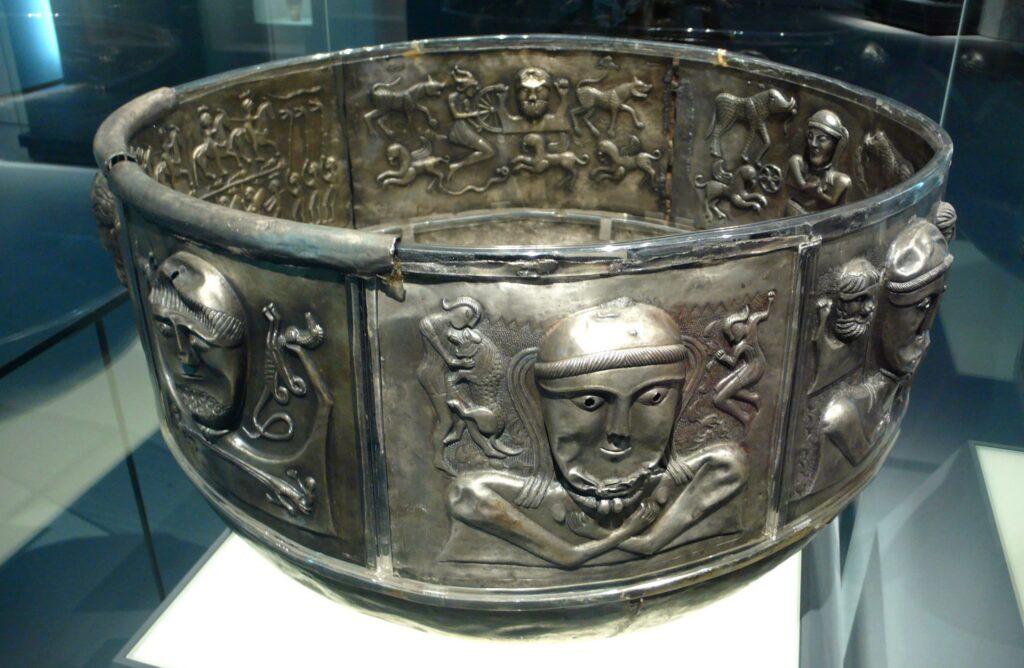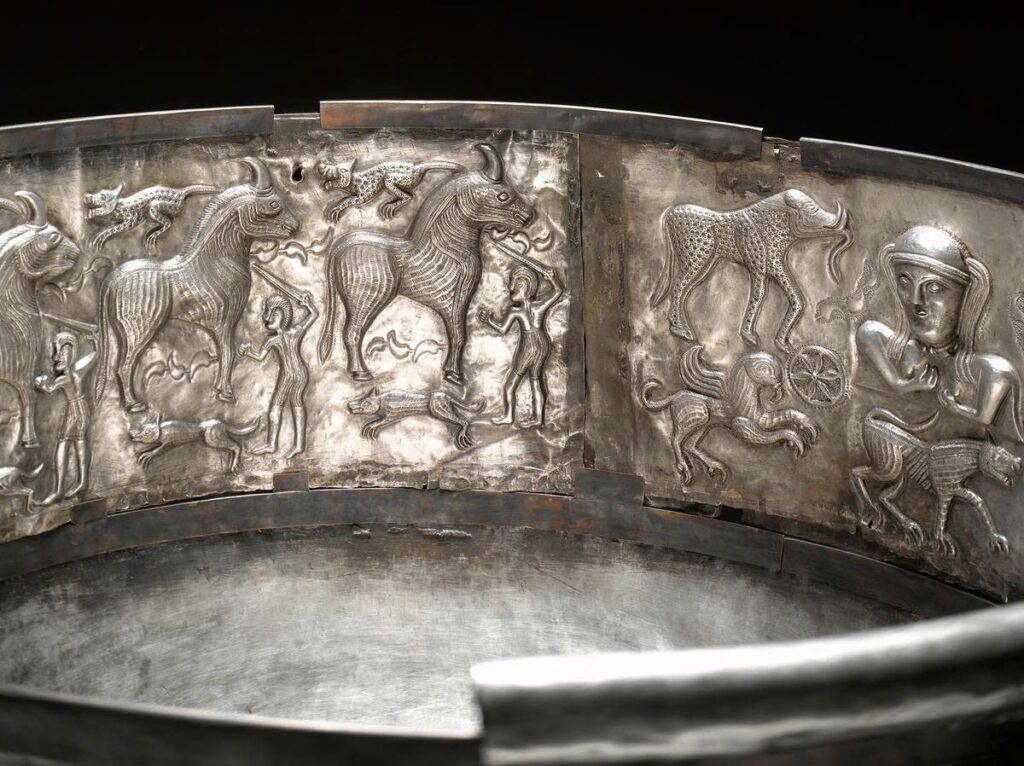A Silver Mystery Unearthed in Denmark

In the peat bogs of Northern Jutland, Denmark, an extraordinary discovery was made that would puzzle archaeologists for decades to come. The Gundestrup Cauldron, a masterpiece of silver craftsmanship, emerged from its muddy resting place, far from the lands traditionally associated with its Celtic creators.
A Vessel of Mythical Proportions

Standing 42 cm tall and 69 cm in diameter, this impressive artifact weighs nearly 9 kilograms. Fourteen intricately decorated silver plates form the cauldron, each telling a story steeped in Celtic mythology. The most captivating figure among these is Cernunnos, the horned god, seated regally with a torque around his neck and a serpent in hand.
Tracing the Cauldron’s Origins
The discovery location of this Celtic treasure in Denmark, a land never inhabited by Celts, sparked intense debate about its origins. Was it crafted in the heart of Celtic territory and somehow transported north? Or perhaps it was the product of a cultural exchange between Thracian silversmiths and Celtic patrons?
A Tale of Two Cultures

Analysis of the cauldron’s materials points to regions associated with Celtic habitation, yet the craftsmanship bears hallmarks of Thracian influence. This unique blend of styles has led some experts to propose that Thracian artisans may have created the cauldron at the behest of a Celtic tribe, possibly in Gaul.
Theories and Speculations
The Cimbri Connection
One intriguing theory suggests that the Germanic Cimbri tribe might have looted the cauldron and brought it to Jutland. While ancient historians have linked the Cimbri to this region, concrete evidence remains elusive.
Challenging the Thracian Origin

Recent scholarship has cast doubt on the long-held belief of the cauldron’s Thracian manufacture. The timeline doesn’t quite align, as Thracian silversmithing peaked centuries before the cauldron’s estimated creation in the mid-2nd century BC.
A Legacy of Ancient Cultural Exchange

Regardless of its precise origins, the Gundestrup Cauldron stands as a testament to the rich cultural interactions of ancient Europe. Its journey from creation to discovery remains shrouded in mystery, but its significance as a window into Celtic mythology and artistry is undeniable. As it sits in museum displays today, the Gundestrup Cauldron continues to captivate viewers and inspire new generations of historians to unravel its secrets.
